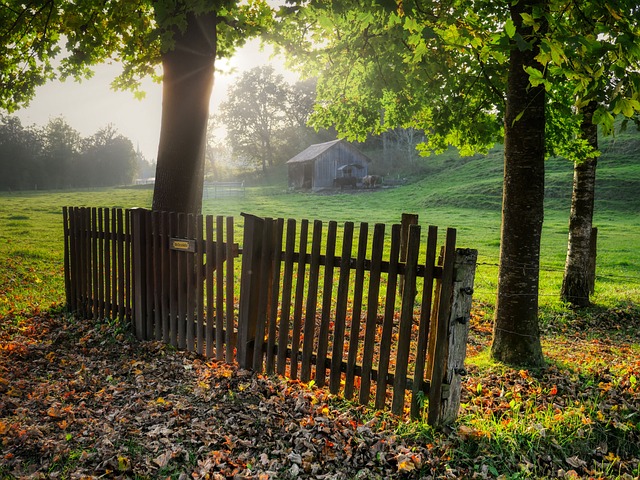In the face of relentless coastal elements, selecting robust fencing solutions is paramount. This article explores the enduring appeal of durable wooden fencing as a strategic choice for coastal areas. We delve into the unique challenges these environments pose and highlight the significant advantages of wood as a sustainable and aesthetically pleasing alternative. By understanding the right wood types and essential installation and maintenance practices, homeowners and builders can safeguard their investments, ensuring long-lasting protection against harsh marine conditions.
- Understanding Coastal Fencing Challenges
- Benefits of Durable Wooden Fencing
- Choosing the Right Wood Types
- Installation Considerations for Coastlines
- Maintenance Tips for Longevity
Understanding Coastal Fencing Challenges
Coastal areas present unique challenges when it comes to fencing due to their harsh environmental conditions. Strong winds, salt air, and frequent rainfall can take a toll on traditional fencing materials, leading to regular maintenance or premature replacements. The primary concern is ensuring that any fencing solution can withstand these elements without compromising structural integrity.
Wooden fences, in particular, require careful consideration for coastal installations. Regular wood may rot or warp when exposed to salt water and high humidity. However, choosing the right type of wood, such as treated or tropical hardwoods known for their resistance to decay and insects, can extend the lifespan of a fence significantly. Additionally, proper sealing and regular maintenance are crucial to protect the fence from coastal elements.
Benefits of Durable Wooden Fencing
Durable wooden fencing offers an appealing and functional solution for coastal areas, where traditional materials may face challenges due to harsh weather conditions. One of its key advantages is aesthetics; wood provides a natural beauty that enhances outdoor spaces, complementing both residential and commercial properties. The material’s versatility allows for a wide range of designs, from classic styles to modern, intricate patterns, ensuring it fits various aesthetic preferences.
Furthermore, durable wooden fencing is an eco-friendly option. Unlike some synthetic materials, wood is renewable and biodegradable, making it a sustainable choice. It also contributes to better air quality as plants can grow through or around natural fences, creating green spaces. Additionally, wooden fences provide excellent privacy and security, offering homeowners and businesses a sense of peace while seamlessly blending with the coastal environment.
Choosing the Right Wood Types
When selecting wood for coastal fencing, understanding the local climate and environment is key. Saltwater exposure, high humidity, and strong winds can accelerate wood decay, so choosing durable species is essential. Look for woods naturally resistant to rot and insects, such as cedar or redwood, known for their longevity in harsh conditions.
These native trees have natural oils that repel water and inhibit fungal growth, making them ideal choices for coastal areas. Alternatively, treated woods like pressure-treated pine or engineered composites can also provide durability against the elements, offering a cost-effective solution with proper maintenance.
Installation Considerations for Coastlines
When installing wooden fencing in coastal areas, several unique considerations come into play to ensure longevity and durability. One of the primary challenges is the constant exposure to harsh weather conditions, including high winds, salt mist, and regular rainfall. Therefore, choosing the right wood type is crucial; opt for treated or tropical hardwoods known for their resistance to rot and insect damage. These woods, such as cedar or teak, have natural preservatives that make them suitable for coastal environments.
The location of the fence also matters. In low-lying areas prone to flooding, raised installations or specific grounding techniques might be necessary to prevent damage from waterlogging. Additionally, considering the proximity to the sea, it’s essential to secure posts and rails robustly to withstand strong waves and currents. Proper drainage systems should be incorporated to manage excess moisture around the fence base, further enhancing its durability.
Maintenance Tips for Longevity
Proper maintenance is key to ensuring your wooden fence lasts for years, especially in harsh coastal environments. Regular cleaning is essential; brush away any salt deposits or debris that may accumulate, as these can weaken the wood over time. Treating the fence with a water-repellent sealer annually will help protect against moisture and prevent rot. This simple step goes a long way in preserving the structural integrity of your fence.
Additionally, keep an eye out for any signs of damage or decay. Repair or replace damaged sections promptly to avoid further deterioration. Ensure proper drainage around the fence to minimize waterlogging, as standing water can accelerate wood rot. Regular inspection and prompt action will contribute significantly to the longevity of your coastal wooden fencing.
